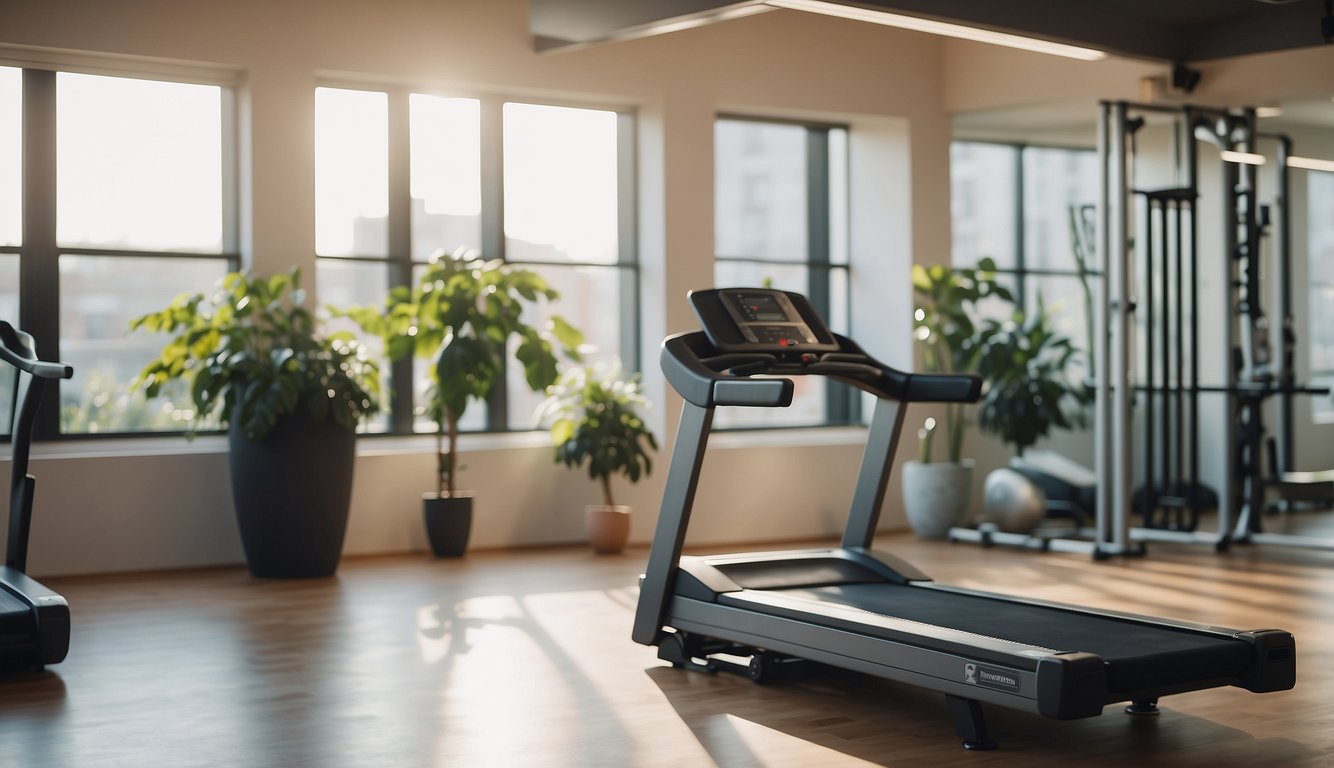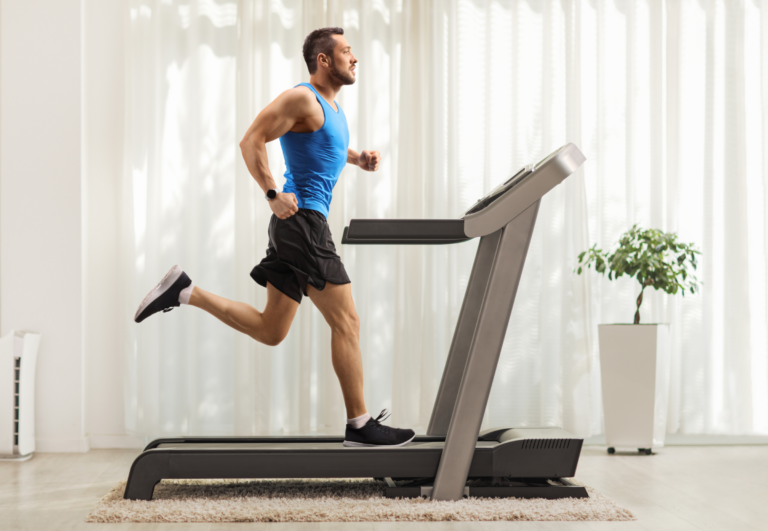Cooldown Routine for Treadmill Runners: Effective Post-Run Practices
Cooling down after a treadmill run is a critical component of your workout routine. As a UESCA certified running coach, I emphasize the importance of a proper cooldown to facilitate recovery and reduce the risk of injury. It’s a process that gradually brings your body back to its pre-exercise state and helps in the dissipation of waste products from the muscles, especially after intense or prolonged running.
I always advise runners to dedicate at least 5 to 10 minutes for a cooldown, which can include a combination of light jogging or walking on the treadmill. This slower activity helps regulate blood flow, prevent dizziness, and prepare your muscles for stretching. Proper stretching targets tight spots and can help improve flexibility, ultimately contributing to a smoother running performance in your next workout.
Engaging in a regular cooldown routine after running on a treadmill can also provide mental benefits, offering you a moment to reflect on your run and relax before moving on with your day. It’s a practice that supports both physical and mental well-being, making it an indispensable part of a runner’s regimen.
Developing a Cooldown Routine
After a treadmill run, it’s vital to allocate time for cooldown to facilitate recovery and bring your heart rate down in a controlled manner. Here’s how I ensure an effective transition from high-intensity running to a state of rest.
Importance of Cooldown
Cooldown is a crucial phase of any run, especially on a treadmill where the body’s exertion level is steady and often high. It’s paramount to conceptualize cooldown as the bridge between the vigorous activity of running and complete rest.
By allowing the heart rate to gradually decrease, you minimize the risks of dizziness and optimize recovery. Proper cooldown can also be a factor in preventing muscle stiffness, aiding in the dissipation of lactic acid, and promoting overall wellbeing.
Elements of an Effective Cooldown
When developing a cooldown routine, ensure it includes the following elements for maximum effectiveness:
- Controlled Breathing: Begin by decreasing the treadmill’s speed and focusing on deep, deliberate breaths. This aids in lowering the heart rate and signals the body to start the recovery process.
- Proper Form Walking: For the first few minutes post-run, walk with a proper form on the treadmill. Maintain an upright posture, swinging arms gently, and aim for a slow but natural stride.
Remember, the aim here is gentle elongation of the muscles, never pushing to discomfort. The cooldown is about recovery, not pushing the limits of flexibility.
- Hydration: Replenish fluids lost during running to aid recovery. Drink water gradually, ensuring you stay hydrated but not uncomfortable.
Incorporating these elements will help construct a cooldown routine that supports a healthy transition from running to rest.
| Muscle Group | Stretch | Duration |
|---|---|---|
| Calves | Standing calf stretch against a wall | 30 secs per leg |
| Hamstrings | Seated or standing hamstring stretch | 30 secs per leg |
| Quadriceps | Standing quad stretch, holding a foot behind you | 30 secs per leg |
| Lower back | Gentle torso twists or child’s pose | 1 minute |
Cooldown Techniques on the Treadmill
Proper cooldown techniques on the treadmill are essential for transitioning your body to a state of rest and recovery after a vigorous workout. By effectively using gradual speed reduction, incline adjustments, and walking intervals, I’ve found that runners can reduce the risk of injury and promote muscle recovery.
Gradual Reduction of Speed
To cool down, start by decreasing the treadmill’s speed at a steady pace over a span of 5 to 10 minutes. This approach allows your heart rate to slowly return to normal. Implement the following speed reduction pattern:
- Minute 1-2: Reduce speed to a light jog (50-60% of your workout pace).
- Minute 3-4: Transition to a brisk walk (40-50% of your workout pace).
- Minute 5-10: Finish with a leisurely walk (20-30% of your workout pace).
Utilizing Incline Settings
Leveraging the incline settings during cooldown phases can aid in lowering the intensity level gradually, similar to descending a hill. Here’s how you can use incline to your advantage:
- Initial Phase: Lower the incline by 1-2% from your workout’s peak incline every 30 seconds.
- Mid-Cool Down: Keep the incline at a low and steady state (1-2%) for most of the cooldown.
- End Phase: Flatten the deck completely to allow your muscles to relax in the last minute.
Incorporating Walking Intervals
Intersperse walking intervals into your cooldown to effectively transition your muscles from running to rest. Here’s a straightforward approach to alternating walking intervals:
- Walking Segment (60-90 seconds): Start with a moderate walking pace.
- Standing Rest (30 seconds): Stand still or walk slowly to completely relax your muscles.
- Repeat: Cycle through walking and standing rest 2-3 times to fully cool down.
Using these methods, I guide runners to conclude their treadmill workouts safely, aiding in muscle recovery and preparing the body for future workouts with minimized discomfort.
Stretching After a Treadmill Run

After completing a treadmill run, a cooldown period that includes stretching can help reduce the risk of injury and aid in muscle recovery. Focusing on key muscle groups like the hamstrings, quads, glutes, and calves, ensures a thorough lower body cooldown, while also remembering to gently stretch the upper body and core for full body relaxation.
Lower Body Stretches
- Hamstrings: Place one heel up on the treadmill, keep your leg straight, and lean forward until you feel a stretch in the back of your thigh. Hold for 20 seconds and switch legs.
- Quads: Standing on one foot, pull the other foot toward your glutes, keeping your knees together and your body straight. Hold onto the treadmill for balance if needed, feeling the stretch down the front of your thigh. Hold each side for 20 seconds.
- Calves: With hands on the treadmill’s front rail, step one foot back and press the heel into the floor while the other leg stays forward and slightly bent, stretching the calf of the back leg. Hold for 20 seconds per leg.
- Glutes: Cross one ankle over the knee of the opposite leg while standing. Sit back as if you’re sitting in a chair, maintaining balance, to stretch your glutes. Hold this position for 20-30 seconds and switch sides.
Upper Body Stretches
The upper body also works hard during a treadmill run, from maintaining posture to swinging your arms. Here are a couple of stretches to ensure your upper body doesn’t feel neglected:
- Shoulder Stretch: Bring one arm across your body and lightly pull it closer with the other arm, to feel a stretch across your shoulder. Hold for 15-20 seconds then switch arms.
- Tricep Stretch: Raise one arm straight up, bend at the elbow and use the other hand to gently push on the bent elbow, stretching the back of your arm. Hold for 15-20 seconds per arm.
Core Relaxation Techniques
While the core may not be as immediately sore as your legs, it’s actively engaged when running and deserves attention during the cooldown:
- Standing Side Bends: With feet shoulder-width apart, interlace your fingers and stretch your arms above your head. Bend gently to one side to stretch your obliques and hold for 10-15 seconds before switching to the other side.
- Lower Back Stretch: Lie down on your back and gently pull your knees to your chest, releasing tension in your lower back. Hold for 15-20 seconds.
Incorporating these stretches and relaxation techniques into your post-run cooldown can enhance recovery and help mitigate soreness. It’s an essential step for any treadmill runner looking to take care of their body and improve overall running performance.
Cooldown Contribution to Treadmill Training
A proper cooldown phase is just as critical as the main treadmill workout. It ensures a smooth transition from high-intensity exercise to a state of rest, which can enhance endurance and assist in injury prevention.
Enhancing Endurance and Recovery
A structured cooldown aids in gradual heart rate deceleration and clearance of lactic acid from muscles, which is essential for quick recovery. Here’s my go-to cooldown routine:
- Reduce Speed Gradually: After the main workout, I bring down my treadmill speed to a light jog for about 5 minutes.
- Easy Walking: I follow the jog with another 5 minutes of walking at a reduced speed and zero incline to normalize heart rate.
Injury Prevention and Form Improvement
A deliberate cooldown routine minimizes the risk of muscle stiffness and injury. It’s also a prime time to focus on running form as the body cools down. I always emphasize:
- Stretching: Key stretches for 5-10 minutes, focusing on the hamstrings, quads, and calves, help maintain flexibility.
- Form Focus: Cooling down at a slower pace allows me to concentrate on my posture, ensuring that my form remains correct even as I fatigue. This helps prevent form-related injuries.
Adhering to these cooldown steps not only contributes to the safety and effectiveness of my treadmill training but also sets a solid foundation for consistent improvement in performance.
Integrating Cardiovascular and Strength Work
Integrating cardiovascular and strength work can significantly enhance the conditioning of a treadmill runner. Hill workouts and targeted strength exercises can build a robust cardiovascular foundation while improving overall leg strength, necessary for marathon training.
Effective Use of Hill Workouts
Hill workouts are an invaluable addition to any treadmill runner’s routine, specifically for building cardiovascular endurance and leg strength.
By adjusting the incline during a treadmill session, I replicate the resistance faced while running hills outdoors. Such sessions should include intervals of increased incline followed by flat or downhill recovery periods, simulating the natural variety of terrain encountered in a race. Always adjust the incline gradually to prevent muscle strain.
Sample Hill Workout:
- Warm-up: 10 minutes at a moderate pace
- Hill Repeat Set:
- 1 minute: Run at an incline of 4-6%
- 2 minutes: Recovery jog at 0-1% incline
- Repeat for 5-10 sets depending on fitness level
- Cool-down: 5-10 minutes of walking at a 0-1% incline
Incorporating Strength Training Movements
To balance hill workouts, I integrate strength movements targeting specific muscles used in running. Lunges, particularly, are effective for building leg strength and improving running mechanics.
Reversing lunges combined with a knee drive can be integrated post-run to enhance strength in a running-specific movement pattern. This type of workout not only augments leg power but also improves balance and coordination.
Strength Training Movements Example:
- Reverse Lunge to Knee Drive:
- Step back into a lunge with the left leg.
- Drive the left knee up towards the chest while balancing on the right leg.
- Perform 10-12 reps on each side for 2-3 sets.





![Is Running in the Heat Good for You? [4 Helpful Benefits & 3 Dangers]](https://yournext.run/wp-content/uploads/2022/12/is-running-in-the-heat-good-for-runners_featured-768x512.png)
